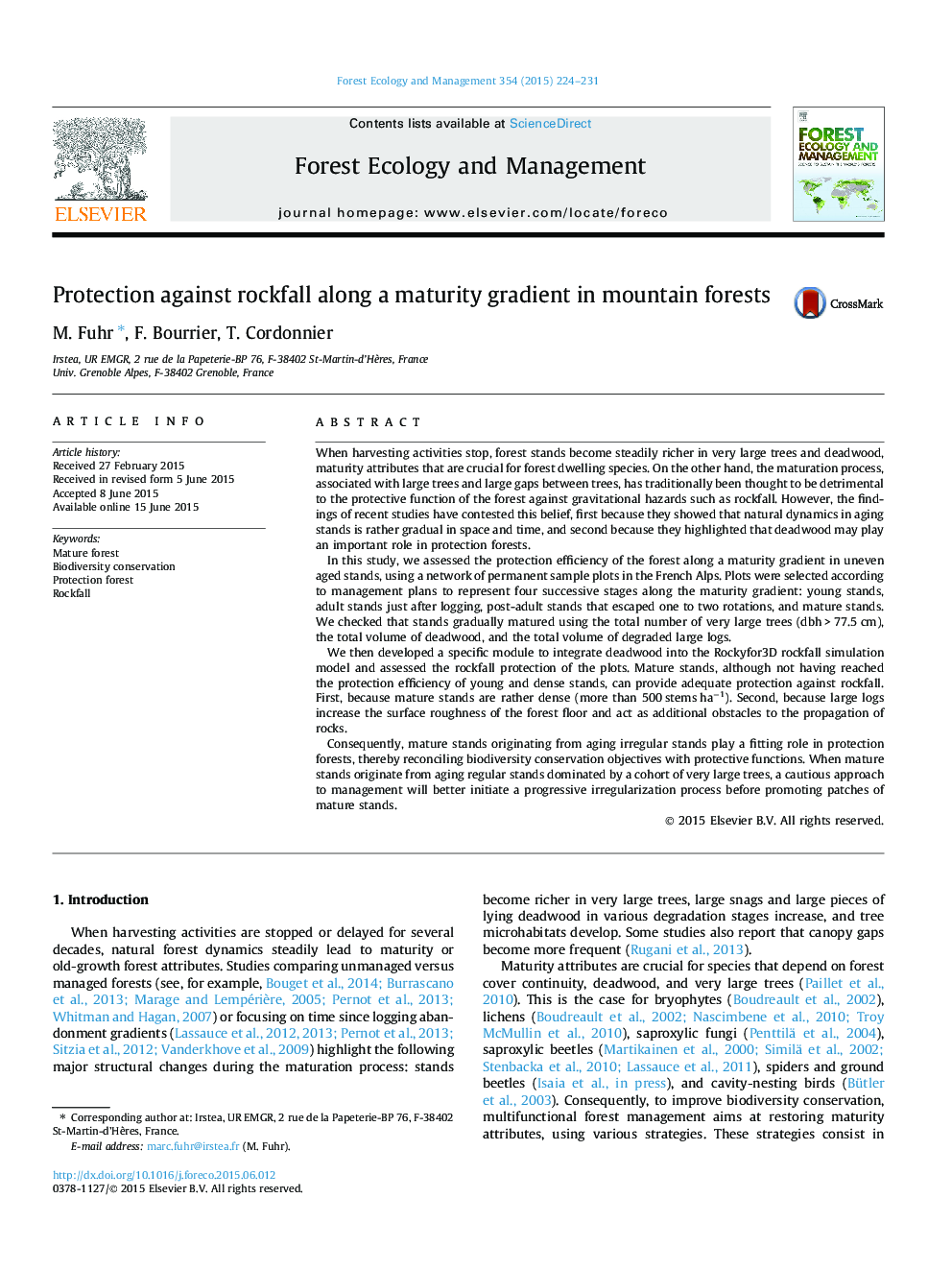| Article ID | Journal | Published Year | Pages | File Type |
|---|---|---|---|---|
| 86153 | Forest Ecology and Management | 2015 | 8 Pages |
•Forest maturity attributes are not associated with low densities in uneven-aged management systems.•Large dead logs enhanced the protection efficiency.•Patches of mature forest stands may be compatible with a protective function.
When harvesting activities stop, forest stands become steadily richer in very large trees and deadwood, maturity attributes that are crucial for forest dwelling species. On the other hand, the maturation process, associated with large trees and large gaps between trees, has traditionally been thought to be detrimental to the protective function of the forest against gravitational hazards such as rockfall. However, the findings of recent studies have contested this belief, first because they showed that natural dynamics in aging stands is rather gradual in space and time, and second because they highlighted that deadwood may play an important role in protection forests.In this study, we assessed the protection efficiency of the forest along a maturity gradient in uneven aged stands, using a network of permanent sample plots in the French Alps. Plots were selected according to management plans to represent four successive stages along the maturity gradient: young stands, adult stands just after logging, post-adult stands that escaped one to two rotations, and mature stands. We checked that stands gradually matured using the total number of very large trees (dbh > 77.5 cm), the total volume of deadwood, and the total volume of degraded large logs.We then developed a specific module to integrate deadwood into the Rockyfor3D rockfall simulation model and assessed the rockfall protection of the plots. Mature stands, although not having reached the protection efficiency of young and dense stands, can provide adequate protection against rockfall. First, because mature stands are rather dense (more than 500 stems ha−1). Second, because large logs increase the surface roughness of the forest floor and act as additional obstacles to the propagation of rocks.Consequently, mature stands originating from aging irregular stands play a fitting role in protection forests, thereby reconciling biodiversity conservation objectives with protective functions. When mature stands originate from aging regular stands dominated by a cohort of very large trees, a cautious approach to management will better initiate a progressive irregularization process before promoting patches of mature stands.
